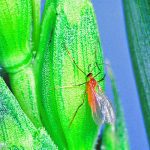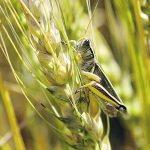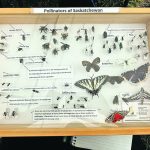Glacier FarmMedia – Producers pay a lot of attention to inputs, seeding rates and combine settings to expand profit margins. According to ag entomology experts, they should also pay attention to pollinator populations and diversity. That means more than honeybees. In Saskatchewan, there are up to 400 different species of bees that contribute as pollinators. […] Read more
Tag Archives Meghan Vankosky

Killing pea leaf weevils with ‘trap crops’
Meghan Vankosky, an Agriculture Canada entomologist, had an idea to attract adult weevils to a trap crop, then kill the pests with an insecticide or an insecticide alternative. That would reduce the number of pea leaf weevils that over-winter on the Prairies.

Wheat midge risk remains
Wheat midge populations are influenced by many factors, including parasitism, overwintering conditions and spring moisture conditions.

Recent snow not expected to hit grasshoppers
Soil likely wasn’t warm enough for the insects to be active when a widespread storm blanketed much of the Prairies
The weather conditions over the next four to six weeks will ultimately determine grasshopper populations said Prairie Pest Monitoring Network scientist and Agriculture Canada entomology expert Meghan Vankosky.



